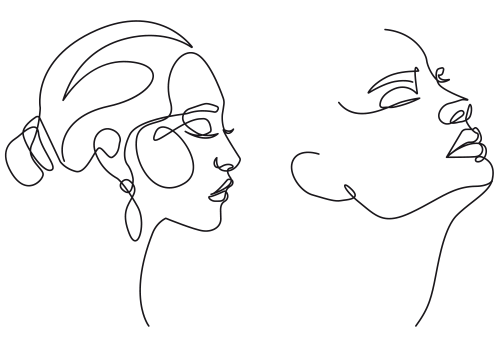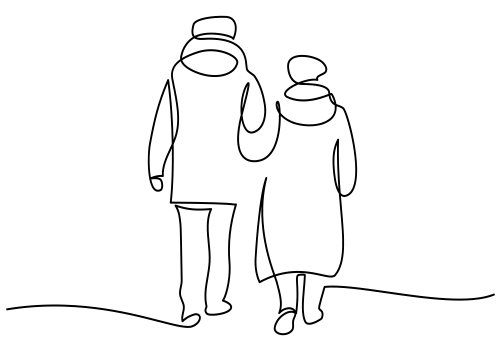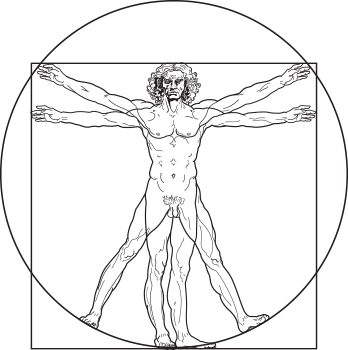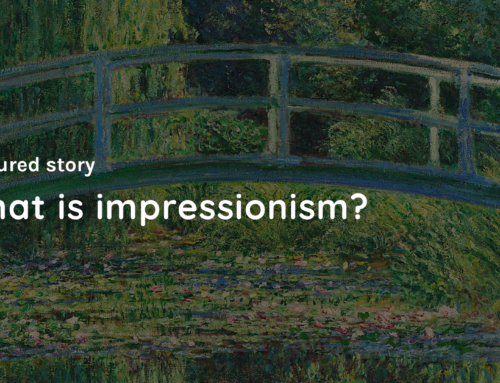Introduction
Contour lines are an essential element of drawing that can add depth, dimension, and structure to any artwork. They are a fundamental building block of all art forms, from painting to sculpture and even graphic design.
What is a Contour Line Drawing?
A contour line is simply an outline that defines the edges of a form or shape. A contour line drawing is a type of art that uses these lines to create a two-dimensional representation of a three-dimensional object or scene. The purpose of a contour line drawing is to capture the essence of a subject by emphasizing its most important features, such as its shape, form, and texture.
Contour line drawings are often used as a starting point for more complex artworks, such as paintings or sculptures. They help artists to create a framework for their work and provide a foundation for exploring the subject further.
Overall, contour line drawing is a crucial skill for any artist, whether a beginner or an experienced professional. By mastering the art of contour lines, artists can create more accurate, realistic, and engaging artwork that captures the essence of their subject and conveys their intended message to the viewer.
Definition of Contour Line Drawing

Explanation of what a contour line is
A contour line is a line that follows the outline of a subject, emphasizing its shape and form. In art, contour lines are often used as the foundation for a drawing or painting, providing the structure and details necessary to create a realistic representation of the subject.
How contour line drawing is used in art
Contour line drawing is a popular technique used by artists to capture the essence of a subject with a few simple lines. By focusing on the contour lines, artists can create a powerful image that captures the shape and form of the subject without the need for excessive detail.
Contour line drawing can be used on its own, as a standalone piece of art, or as the basis for a more complex work. It is often used in the initial stages of a painting or drawing as a way of mapping out the composition and getting a sense of the overall structure of the work.
The historical context of contour line drawing
Contour line drawing has a rich history, dating back to the early days of art. The technique has been used by artists in many different cultures and periods, from the ancient Egyptians and Greeks to the Renaissance and beyond.
One of the earliest known uses of contour line drawing was in ancient Egyptian art, which was used to depict figures in a stylized, flattened manner. The technique was also popular in ancient Greece, where it was used to create highly detailed pottery.
In the Renaissance, contour line drawing became a key component of artistic training, with artists such as Leonardo da Vinci and Michelangelo using the technique to create highly detailed studies of the human form.
Types of Contour Lines

Contour lines are not one-size-fits-all. Depending on the subject, different types of contour lines can be used to create a specific effect.
1. Blind Contour Line
A blind contour line is created by drawing an object while looking only at the object, not at the paper. This type of line is often used in warm-up exercises and is useful for capturing the movement and essence of the object rather than just its physical attributes.
2. Continuous Contour Line
Continuous contour lines are created by drawing a subject without lifting the pen from the paper. This type of line is great for creating intricate, detailed drawings and can be used to create a sense of texture and depth.
3. Cross Contour Line
Cross-contour lines are created by drawing parallel lines across a subject to show the shape and form of the object. This type of line is great for creating a sense of three-dimensionality and solidity and is often used in figure drawing.
4. Implied Contour Line
An implied contour line is created by suggesting the outline of an object rather than drawing it. This type of line is great for creating a sense of movement and energy and is often used in drawings of animals and people.
By understanding the different types of contour lines, an artist can choose the best one for their subject and create a more dynamic and interesting drawing.
IV. Techniques for Drawing Contour Lines
Drawing contour lines is a popular technique in art, and it can be done using various materials such as pencil, pen, charcoal, or brush. Here are some techniques for drawing contour lines:
Materials Used in Contour Line Drawing
The choice of material in contour line drawing depends on the artist’s preference and the desired effect. The most commonly used materials include:
- Pencil: Contour lines can be drawn using different grades of pencils to create varied tones. Hard pencils, such as H grades, produce lighter lines, while soft pencils, such as B grades, create darker and bolder lines.
- Pen and Ink: This is a popular choice for artists who want to create sharp, precise lines. Pen and ink can be used to create both delicate and bold lines, making it a versatile option.
- Charcoal: Charcoal is ideal for creating dark and bold lines, making it perfect for drawing contours of objects with a strong contrast between light and dark areas.
- Brush and Ink: A brush can be used to create fluid lines that are ideal for capturing movement, such as the contours of a figure.
Techniques for Drawing Contour Lines
Here are some techniques for drawing contour lines:
- Continuous Line Drawing: In this technique, the artist draws the contours of an object without lifting their pencil or pen from the paper. This creates a continuous line drawing that can be used to create dynamic and fluid drawings.
- Cross-Contour Lines: These lines follow an object’s form, creating an illusion of depth and volume. Cross-contour lines can be used to create three-dimensional effects in a drawing.
- Blind Contour Drawing: This technique involves drawing the contours of an object without looking at the paper. The artist keeps their eyes fixed on the object, which results in a drawing that captures the unique character and energy of the object.
- Hatching and Cross-Hatching: These techniques involve drawing parallel lines to create the contours of an object. Hatching involves drawing lines in one direction, while cross-hatching involves overlapping lines in different directions to create a more complex pattern.
How to Use Contour Lines to Create Depth and Texture in a Drawing
Contour lines can be used to create depth and texture in a drawing by varying the lines’ thickness, length, and direction. Bold and thick lines can be used to create a sense of volume and solidity, while delicate lines can be used to suggest lightness and fragility. Using cross-contour lines, an artist can create the illusion of form and volume. Hatching and cross-hatching can be used to create texture in a drawing, making it possible to suggest the surface of an object, such as wood grain or fur. Using different materials and techniques in contour line drawing provides a range of possibilities for artists to create intricate and engaging drawings.
Examples of Contour Line Artwork

Contour line drawing is an essential technique many artists use across various art forms, including drawing, painting, and printmaking. Some of the most famous artists in history, such as Leonardo da Vinci and Rembrandt, have used contour lines.
One of the most famous examples of contour line art is the “Vitruvian Man” by Leonardo da Vinci. In this drawing, da Vinci used a series of contour lines to depict the proportions of the human body. The lines create an illusion of depth and give the drawing a sense of movement.
Another famous example of contour line art is “The Night Watch” by Rembrandt. In this painting, Rembrandt used contour lines to define the shape and position of the figures. The lines also help to create a sense of depth and space, making the painting feel more three-dimensional.
Contemporary artists also use contour lines in their work. For example, the artist Pablo Picasso used contour lines in his famous painting “Three Musicians.” The lines help to define the shapes of the musicians and create a sense of depth in the painting.
In printmaking, contour lines are an essential part of the process. In etching, for example, artists use a sharp tool to scratch lines into a metal plate. The lines define the shapes and contours of the image and are then used to create the final print.
Conclusion
Contour lines are an essential element in the art that can add depth, texture, and definition to a drawing. They are used to create the outline of an object and give it form, making it appear more three-dimensional. Understanding the types of contour lines and techniques for drawing them is essential for any artist looking to create compelling, realistic drawings.
Incorporating contour lines into your artwork can take some practice, but with patience and experimentation, you can achieve great results. Whether you are a beginner or an experienced artist, many resources are available to help you learn more about contour line drawing, including online tutorials, instructional videos, and art books.







